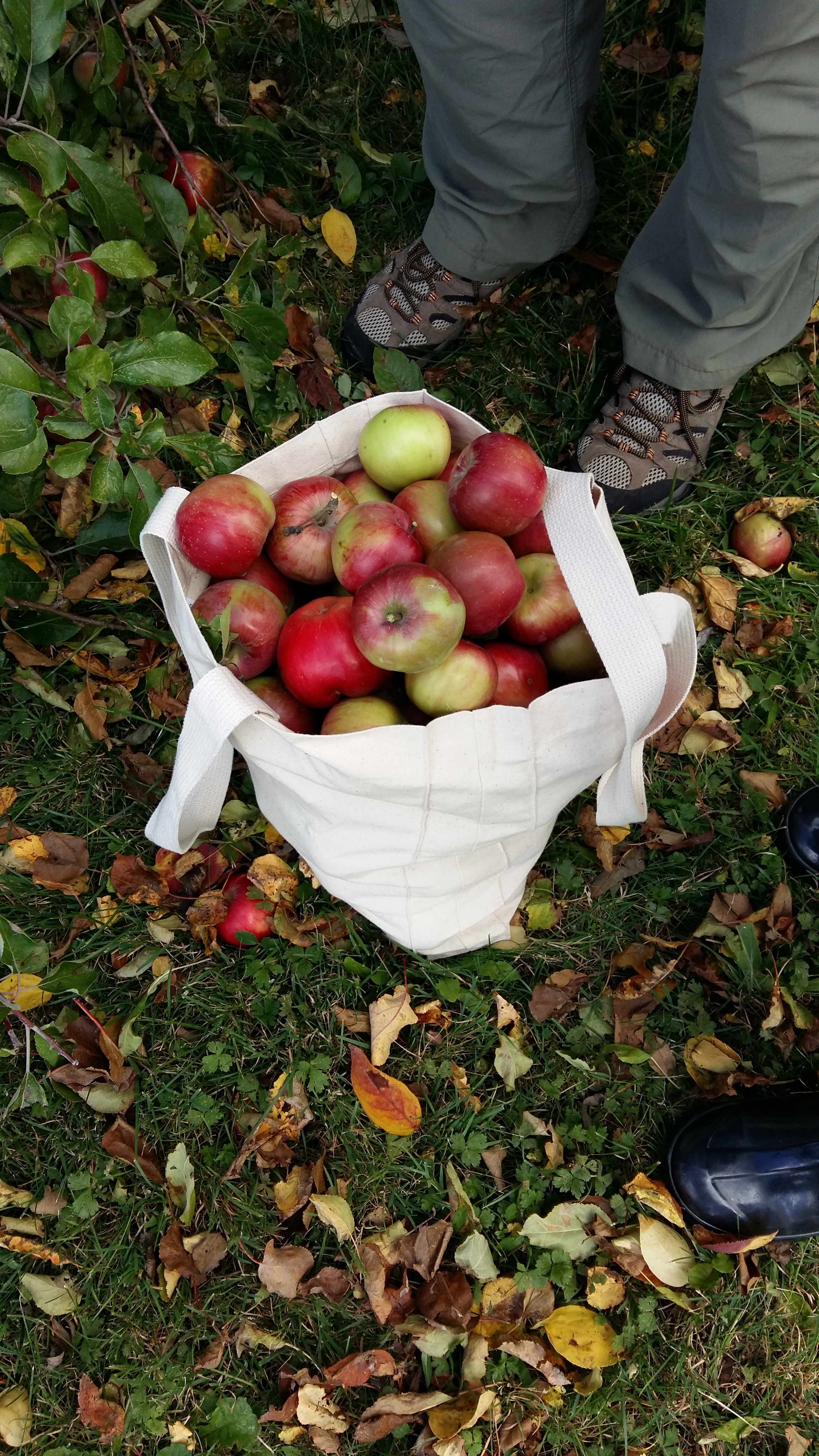Old Orchards, New Discoveries
Yesterday we visited a rural neighbour whose grandparents-in-law planted a small apple orchard on the property a century or so ago. We had ridden our bikes past those venerable trees this summer; one day, I knocked on the door and asked if their owner would mind our picking some of tempting-looking fruit. She not only kindly agreed but also gave us a tour of apple varieties in the orchard–Duchess, Astrachan, Alexander, and King– names which rang many ancestral bells for me. These old names are so familiar to me from listening to my grandmother’s stories about her childhood in an apple-growing family in the Annapolis Valley, remembering her careful distinction between “cooking apples” and “eating apples,” and her favorite early and late varieties. Many of these names have fallen out of the popular vocabulary (like Victorian men named Eleazar or Alonzo or women named Beryl and Gertie) and are no longer to be seen at farmers’ market tables or roadside stands. Many lovely old Nova Scotia apple trees have been cut down and replaced by the ubiquitous Honeycrisp, a fruit prized for its saccharine crunch.
Still, there is infinitely much to be said for a Gravenstein apple pie, the long storage life of a Northern Spy or Cortland, or the first taste of an early-ripening Bough Sweet or Astrachan, types of apple grown for decades in the Maritimes.
It’s hard to describe the joy I felt when our neighbour told us that the oldest, broadest, and most impressive apple tree on her property was a King. My grandmother’s favorite baking apple, King is a tall, round, and fleshy specimen with a satisfying crunch, ripening late in the season. Her tree, likely more than 80 years old, has spreading, pendulous branches like a willow, and are heavily laden with crimson fruit. The trunk strains under its load; its owners have braced it with chains to keep it from splitting. A child’s swing suspended from its boughs provides a touching reminder of the passage of time in a family. This tree is grandmotherly, welcoming, extending its arms and hands towards us. I feel so happy watching my five-year-old picking from its unsprayed branches, chattering about the pies and crisps he hopes to make from these apples with his own grandmother. Touching my hand to its bough, I feel the generations before me touching me back, the ache of many winters on this exposed section of the North Shore where the wind never seems to stop blowing. The sadness of every early hurricane that knocked the fruit to the ground before its full ripening. The hope for a better season ahead.
I get mighty wistful thinking about apple trees, in the same way one might when walking into an old, loved family home. They are a living link to our past.
I think the best way to enjoy a King apple is by baking it. This works well with other varieties, too, especially Gravenstein, Cortland, and Northern Spy.
Baked Apples
Cut the cores out of four (or more) apples. Mix together about 1/2 cup of chopped walnuts or pecans, 1/2 cup raisins, 1/2 teaspoon of cinnamon or other favorite warming spice like nutmeg, allspice or ginger. Drizzle with a few teaspoons of maple syrup. Fill the apples with nut mixture and bake in a 350 degree oven until apples are tender–about 30-40 minutes. Serve as is, or with a dollop of vanilla ice cream.
